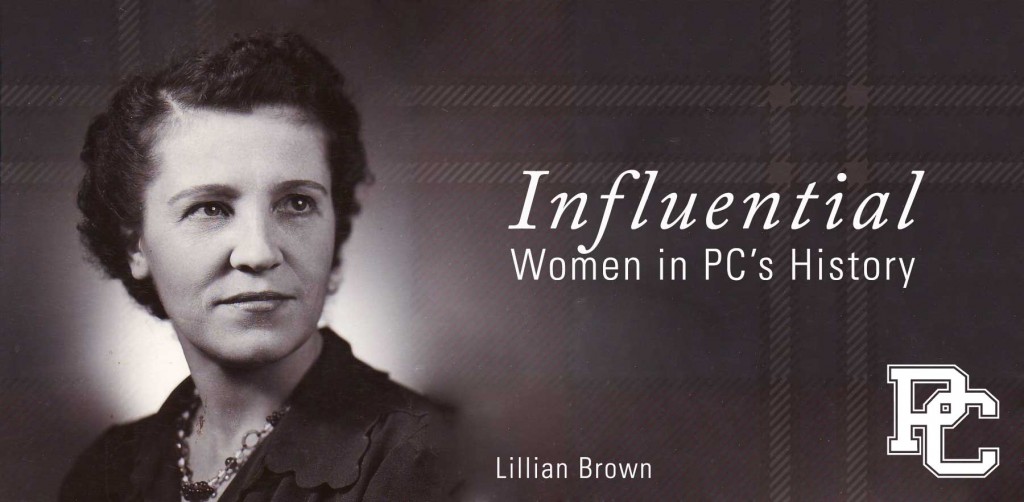Influential Women in PC’s History: Lillian Brown

Lillian Gross Brown
As he marched down the aisle in full academic regalia during his inaugural ceremony in 1998, Presbyterian College President John Griffith halted the processional and shared a few words with a woman sitting on the aisle. Wearing a smile undoubtedly born from the woman’s words of encouragement, Griffith continued toward the stage to be installed as the college’s 16th president.
The ability to command a presidential audience at any moment summed up the stature Lillian Gross Brown – known to many simply as “Mrs. Bee” – held at Presbyterian College.
“She was a genteel lady who came to Clinton as a bride in 1926 and dedicated her life to the welfare of Presbyterian College and its students. No problem was too small for her to be interested in the solution,” the late Ed Campbell told Presbyterian College Magazine following her death. “I think the PC Spirit is as much a credit to her love of this institution as anything.”
Brown served as registrar at PC from 1928 until 1945, when her husband, Dr. Marshall W. Brown, was named as the college’s 13th president. Her tenure as first lady lasted until 1963.
Although she strongly supported the college’s academic program and faculty, her love of the institution was fueled by PC’s students. During World War II, she served as the editor and guiding spriti of the “Bee-Mail Letters,” a collection of thoughts and stories from Presbyterian College students and alumni serving in all branches of the armed forces. She sent the Bee-Mail Letters every two weeks to those servicemen, bringing encouragement, support, and comfort to the soldiers.
A 1945 edition of The Greenville News recalled, “…her mail bag is filled daily with letters from these ‘PC’uns’ thanking her, telling her frankly of human feelings, in the stress of giant warfare, recounting incidents of battle and camp life, incidents humorous and pathetic. And she reads them all and digests them and weaves them together into her ‘Bee-Mail Letter’ which is a running story of what they think and feel and where they are and what they are doing.”
Eventually, more than 1,000 alumni were on her mailing list. After the war, grateful former students named Mrs. Bee an honorary alumna and presented her with the Alumni Gold P Award for 1945.
